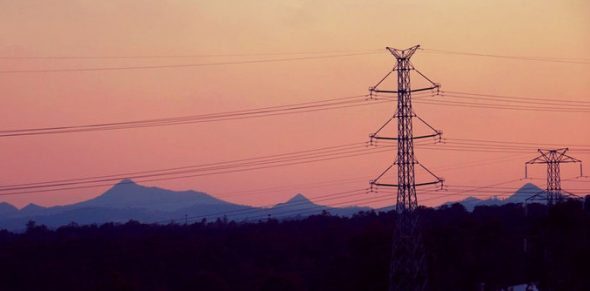
The public debate over the problems of electricity supply displays a curious disconnect. On the one hand, there is virtually universal agreement that the system is in crisis. After 25 years, the promised outcomes of reform – cheaper and more reliable electricity, competitive markets and rational investment decisions – are further away than ever. ![]()
On the other hand, proposals to change the situation range from marginal tweaks to politically motivated mischief-making. The preliminary report of the Independent Review into the Future Security of the National Electricity Market, released last year, canvasses such options as the introduction of capacity markets for reserve power, which have done little to resolve problems overseas.
Meanwhile, the Turnbull government has used recent failures to score points against renewable energy (hated, for obscure historical-cultural reasons, by its right-wing base) and to promote the absurd idea of new coal-fired power stations.
A sorry state
This debate might make sense if the system had worked well in the past. In reality, however, the National Electricity Market (NEM) never produced lower prices or more reliable power for households.
In the early years of the NEM, reductions in maintenance spending concealed this failure. When new investment became necessary in the early 2000s, the result was a dramatic upsurge in prices. This was primarily because the NEM regulatory system allowed rates of return on capital far higher than those needed to finance the system under public ownership.
Until the 1990s state governments owned and controlled Australia’s electricity grids from power stations to poles and wires. The expansion of interconnections between state networks created the possibility of a truly national network. The Commonwealth and the states could have jointly owned such a network, following the highly successful model of Snowy Hydro.
The creation of the NEM broke this system into pieces. Ownership of generation was separated from transmission, distribution and retail, while maintaining effectively separate state systems. The only national component was at the regulatory level, where two separate national regulators (the Australian Energy Market Operator and the Australian Energy Regulator) overlap with the continuing regulatory operations of state governments.
Most state governments have sold their electricity enterprises wholly or partly. Victoria and South Australia fully privatised their systems by the early 2000s. NSW partially privatised its network business after 2015. Queensland privatised the retail sector but maintained public ownership of the network and some electricity generation.
Contrary to the hopes of the market designers, breaking up these integrated systems has delivered no benefits, while incurring huge costs. Power prices have continued to rise.
These costs have been on display, in dramatic form, in recent system failures in South Australia, Victoria and Tasmania. Everyone has blamed everyone else, and no real change has emerged.
The tragedy is that all this could have been avoided if we had seized the opportunity in the 1990s to build a unified national grid, with a single authority running transmission networks and the interconnectors between them. This would still allow competition in generation, but would abandon the idea of market incentives in the provision of network services.
Electricity networks are considered to be natural monopolies. Unlike other industries, where it makes sense for lots of businesses to compete and drive costs lower, the cost and importance of supplying electricity means it make sense for one business to control the market.
Given this status, this authority should not be a privatised firm or even a corporatised government enterprise. Instead, it should be a statutory authority with a primary mission of delivering energy security at low cost.
This failure was not confined to electricity. Our telecommunications network was also privatised in the 1990s, with the promise that competition would deliver better services. In reality, investment and innovation stagnated. It got to the point where the government was forced to re-enter the market with the National Broadband Network (NBN).
As the NBN example suggests, unscrambling the egg of failed reform will be a complex and messy business. It will have to be done gradually, perhaps beginning with South Australia and Tasmania, the states worst affected by recent disasters. But there is no satisfactory alternative.
Public appetite, lack of political will
An obvious question is whether renationalising the electricity network is politically feasible. While the political class on both sides views privatised infrastructure as an unchallengeable necessity, the general public has a very different view. With only a handful of exceptions, voters have rejected privatisation whenever they have had a chance to do so.
The question of reversing past privatisations is more difficult, and there is less evidence. However, none of the privatisations of the reform era, even those that took place decades ago, commands majority support in Australia.
The question has been addressed by pollsters in Britain, which provided the model for Australia’s energy reforms. The results show overwhelming public support for renationalisation, even though the electricity industry has been in private ownership for decades. Even a majority of Conservative voters support public ownership.
The issue will have its next electoral test in Western Australia, where the Barnett government is proposing to sell its majority interest in its electricity distribution enterprise Western Power. While nothing is ever certain in politics, current polls suggest the government is headed for defeat.
Source: The Conversation. Reproduced with permission.








